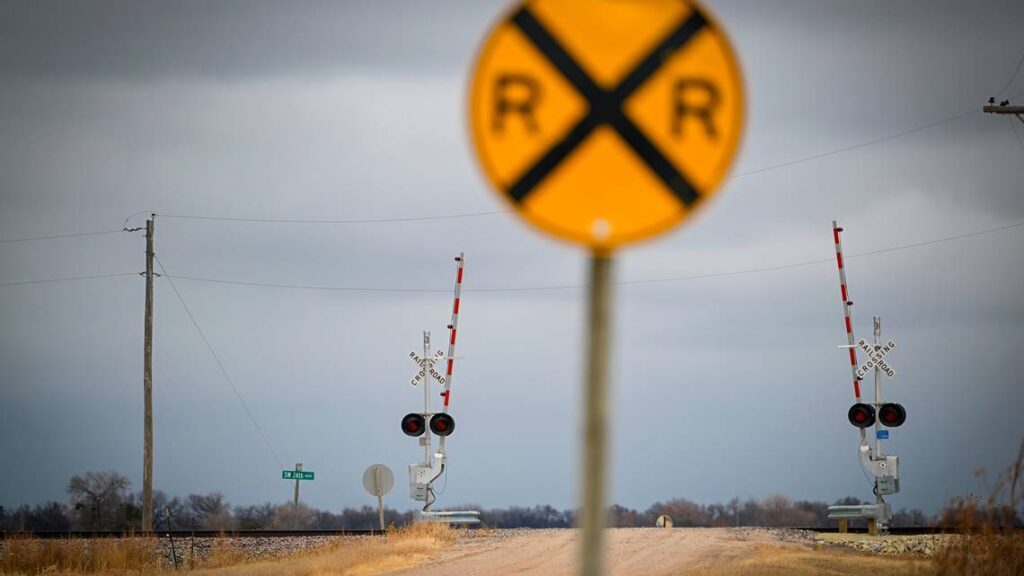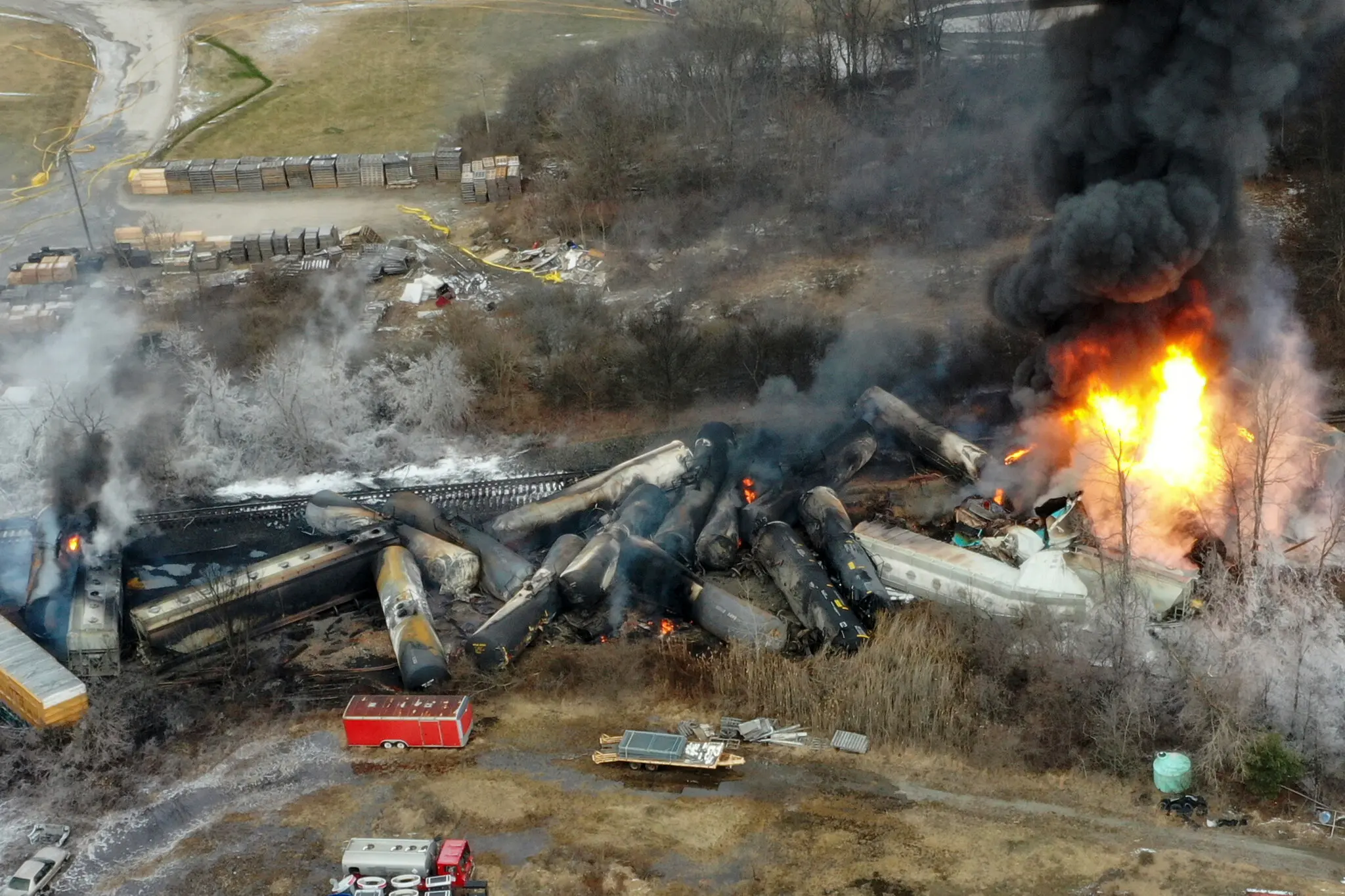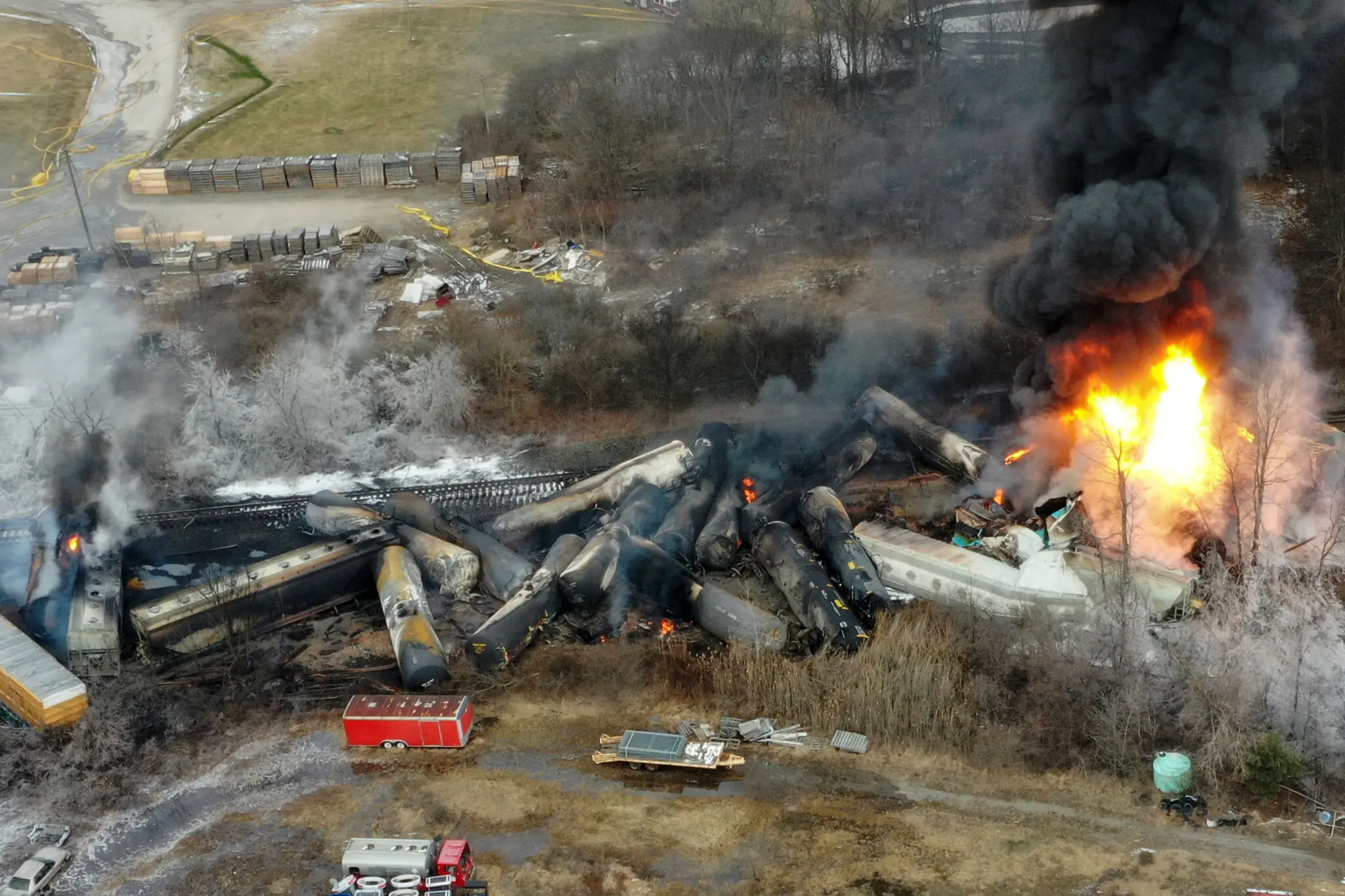Winners of the 2023 Casey Feldman Award for Transportation Safety Reporting Announced
A groundbreaking investigation by the Kansas City Star finding that scores of motorists have been killed at unprotected rail crossings by oncoming trains in recent years has been named the top winner of the second annual Casey Feldman Transportation Safety Reporting Award.
The report, by Judy L. Thomas, Laura Bauer and Kevin Hardy, found that across a broad cross section of America there are thousands of public rail crossings without warning lights and gates, raising the risk for motorists as well as farm workers who frequently traverse crossings with tractors and other agricultural equipment.

Bureaucratic delays and railroad foot dragging were the root causes for the failure to make safety improvements, the investigation found.
The first runner up went to the New York Times for a report on safety problems with the Norfolk Southern rail line following the derailment of its tanker car train in East Palestine Ohio on Feb. 3, 2023. Some 38 tanker cars carrying hazardous materials were involved in the pileup, catching fire, and burning for days.
The award is given by the Casey Feldman Foundation in conjunction with the University of Colorado Boulder’s College of Media, Communication and Information. The award honors Casey Feldman, a 21-year-old communications major at Fordham University who was killed July 17, 2009, when she was run over in a crosswalk in Ocean City, New Jersey by a delivery van.
The driver of the van had been reaching for a GPS at the time of the crash.
Casey’s passion was writing, and she was the news editor of Fordham’s student newspaper, The Observer, and already was an award-winning journalist. Her favorite quote was from H.L. Mencken who wrote, “I know of no other human being who has a better time than an eager, energetic young reporter.”
Following her death, Casey’s parents, Joel Feldman and Dianne Anderson created the Casey Feldman Foundation and its sponsored project, EndDD.org to raise public awareness of the dangers of distracted driving and to encourage drivers and passengers to take steps to end the practice.
To date, presentations on the hazards of distracted driving sponsored through EndDD.org have reached more than 500,000 adults and teens across the United States.
“My wife, Dianne Anderson, and I established the Casey Feldman Transportation Safety Reporting Award in the memory of our daughter Casey,” Feldman said. “Together with our partners, the University of Colorado Boulder School of Media, Communication and Information and Cambridge Mobile Telematics, we are thrilled with this year’s winning entries, from the Kansas City Star and the New York Times. It is our honor to encourage and reward great reporting that will increase transportation safety.”
The Kansas City Star reporters received a cash award of $2,000 for their work; the team from the Times was awarded $500.
Feldman said that investigative reporting of the type exemplified by this year’s winners is essential for having an informed public and to hold both government and corporate decision makers accountable.
Kansas City Star Investigation
The Kansas City Star team began its investigation of dangerous rail crossings in 2022 after an Amtrak derailment near Mendon, Missouri left four people dead, and 150 injured. The crossing at which the crash occurred had been slated for safety improvements, and local residents had long voiced concern, but the work never took place.
The Star report found that fatal crashes had occurred at scores of unprotected crossings around the country during the period that it examined and that the railroads leave it to state and federal authorities to decide not only where to make improvements but also to pay for them.
The Star examined transportation records for 12 states with the most miles of public tracks and then created a database showing where the fatalities occurred and whether the crossings had warning lights and gates. In Missouri alone, during the five-year period studied, there had been 12 fatalities at crossings that had been slated for safety improvements but had not been implemented.
In the states examined by the Star, 90 of the 406 fatal railway collisions occurred at crossings where the only warnings were a so-called cross buck signs, white, crossed signs indicating a rail crossing, but no flashing lights or gates that lower as a train approaches.
For years, railroads and others had made the argument that motorist themselves were responsible for their safety at rail crossings, but the Star investigation showed that the condition of crossings – the grade of the road, sight lines for motorists and whether foliage obstructed views – were substantial safety factors.
The Star also found that the cost of safety improvements, born almost entirely by state and local governments, has skyrocketed in recent years while the National Transportation Safety Board investigates only a miniscule number of rail accidents – only 14 of 1,887 in 2021.
The NTSB, at the same time, has no enforcement authority while accident reports come from the railroads themselves. When the NTSB makes safety recommendations, they typically are ignored.
The Star report exemplified the best of investigative journalism, and its reporters overcame multiple obstacles in their research into the issue. They spent months sifting through rail crossing and accident data to show how unprotected crossings are especially dangerous and where improvements are needed.
The reporters also interviewed local officials who had long been concerned about unprotected crossings and accident victims’ families to give a sense of the emotional toll that these avoidable crashes inflict on survivors.
“We are so honored (to receive the award),” said Laura Bauer, an investigative reporter at the Star. The report, she said, “pulls back the curtain of accountability and raises the question, Did these people need to die?”
Bauer gave the Star high marks for authorizing the investigative project in the first place.
“This story could have been ‘Four people died and it should have been fixed sooner’,” Bauer said. But she said the Star had greater ambitions for their report.
“Something happened and you need to hold people accountable,” she said.
Norfolk Southern Safety Issues

The Times’ investigation of Norfolk Southern, by reporters Peter Eavis, Mark Walker and Niraj Chokshi, following the East Palestine derailment found that the rail line’s accident and employee injury rate had soared, giving it the worst safety record among the nation’s four major railroads.
The reporters conducted extensive interviews with a Norfolk Southern locomotive engineer who was fired by the railroad after he refused to operate a train that he said had defective brakes that could have led to a derailment.
Hundreds of whistleblower complaints have been filed by employees against the rail line and since 2012 while the size of Norfolk Southern’s workforce has declined by 39 percent, the Times found. That workforce reduction exceeded the rates of competitor rail lines, BNSF and CSX and Union Pacific. Meanwhile, Norfolk Southern’s accident rate soared 80 percent, the Times reporters found, the largest increase among the four rail lines.
Over the past decade, the employee injury rate has also risen.
The Times reporters also found that the rising accident and injury rate occurred at a time when railroads have boosted profits by squeezing ever greater efficiencies from their rail operations.
The technique, known in the industry, as precision scheduled railroading, involves strictly adhering to operating schedules, cutting staff and cars and running longer trains. The practice has made railways very profitable, but also raised concerns that the push for greater efficiency and profits has come at the expense of safety.
Challenges Faced by Reporters
Every important newspaper investigation poses hurdles that reporters must overcome to find out what happened. The Times report was no exception.
Eavis, a long-time business reporter at the Times, said railroad accident tables maintained by the Federal Railroad Administration were so antiquated that usable data at the outset was not readily available. The reporters solved that problem by extracting data from the federal database and reformulating tables in a way that showed the accident rate for each railroad.
Another hurdle was finding railroad workers who were in a position to talk about safety problems at Norfolk Southern. That was an obstacle the reporters overcame through simple persistence.



